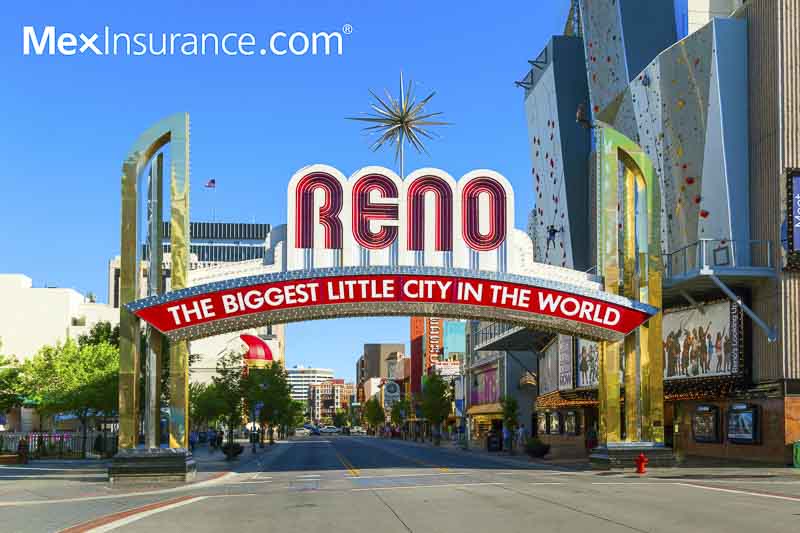Fri, 04 Sep 2020 19:52:52 +0000
The history of Reno starts in the 1860s. Perched on the Truckee River in northwest Nevada, Reno rests in a high desert river valley at the base of the Sierra Nevada. It is the biggest city in Washoe County, with an estimated population of 260,258 people. But The Biggest Little City in the World started off relatively poor.
History of Reno: Humble Beginnings
The area was inhabited by Washoe and Paiute tribes before the discovery of gold nearby. During the 1840s and 1850s, people would stop for a while in the Truckee Meadows on their way to look for gold in California. This gave them the perfect space to let their animals rest and refresh before attempting the crossing.
Reno was established in the late 1860s, built on a foundation of mining, gambling, and the nearby gold rush. The transcontinental railroad was constructed in 1868, opening up a whole new world of transportation and commerce for the area. The same year, the city of Reno was officially established, and was named after Union Civil War hero, General Jesse Reno.
In 1900, southwestern Nevada experienced a mining boom that boosted the state’s economy. Reno was ideally set to benefit from this boom. The first decade of the 1900s saw the establishment of a public library, University of Nevada’s Mackay School of Mines, and the Washoe County Courthouse in the city.
Reno’s Economic Upswing
The early 1900s is also when millionaire George Wingfield arrived in Reno. He used it as the headquarters for his expanding and diverse empire. Wingfield, who had made his wealth in Goldfield, ran his mining, banking, hotels, ranching, and political endeavors from Reno. At this time, Reno had a population of approximately 4,500 people.
In the 1920s, Reno made a name for itself for its quick and easy divorce laws. The decade also marked the opening of the Empire Theatre, the State Theatre, the Southern Pacific Railroad Depot, and the Reno Arch. As the city expanded, the last years of the decade added Hubbard Airfield, among other major attractions, to the face of the city. By the year 1930, Reno had grown substantially, with a population of around 18,500.
History of Reno: Nevada Gambling Takes Over

Gambling was legalized in Reno in 1931, changing the face of the city forever. The same year, the divorce residence requirement was lowered to six weeks. This gave couples an even faster way to get through a divorce, solidifying Reno’s status as a divorce giant.
In 1947, Reno saw its first high-rise casino hotel, the Mapes Hotel. Its structure soon became the model for future businesses to set up shop in Reno. The last half of the 20th century was a prosperous time for The Biggest Little City in the World.
As the 20th century was nearing its end, the business had slowed significantly for Reno. In order to survive in a new age, the city began to look for new ways to draw visitors. Reno remains the second largest tourist city in the state with a broad array of entertainment options for travelers.
If you’re heading to Mexico from Reno, make sure you get your Mexican Car Insurance BEFORE you leave your home. From your computer or mobile device just go to mexinsurance.com.





